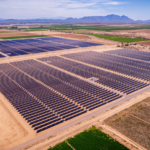In 2024, 242 million students across 85 countries faced disruptions in their schooling due to extreme climate events, including heatwaves, tropical cyclones, floods, droughts, and storms, according to a new analysis by UNICEF. The report, titled “Learning Interrupted: Global Snapshot of Climate-Related School Disruptions in 2024”, was released on International Day of Education and highlights the devastating impact of climate hazards on global education systems.
Key Findings from UNICEF’s Analysis
- Heatwaves Lead School Closures
Heatwaves were the predominant climate hazard in 2024, forcing widespread school closures.- Over 118 million students were affected in April alone, with significant disruptions in Bangladesh, the Philippines, and Cambodia.
- Cambodia shortened its school day by two hours, while South Asia recorded temperatures as high as 47°C (116°F), putting children at risk of heat-related illnesses.
- Multiple Climate Hazards Impacting Education
- In Afghanistan, severe flash floods in May destroyed over 110 schools, leaving thousands of students without access to education.
- September, marking the start of the academic year for many regions, saw 16 countries suspending classes due to extreme weather, including Typhoon Yagi, which affected 16 million children in East Asia and the Pacific.
- Regional Disparities in Impact
- South Asia was the hardest-hit region, with 128 million students facing climate-related disruptions.
- East Asia and the Pacific followed, with 50 million students impacted.
- In Africa, El Niño brought heavy rains and floods to East Africa, while severe drought affected Southern Africa, disrupting education across vast areas.
- Global Reach of the Crisis
- No region was spared, with even high-income countries like Italy and Spain experiencing disruptions. In September, torrential rains in Italy disrupted schooling for 900,000 students, and floods in Spain in October halted classes for 13,000 children.
Children: The Most Vulnerable Victims of Climate Disasters
The report underscores how children are uniquely vulnerable to climate-related crises:
- Health risks: Children’s bodies are less equipped to handle extreme heat, making it harder for them to concentrate in classrooms.
- Access challenges: Flooded roads and damaged infrastructure prevent children from attending school.
- Long-term impacts: Prolonged school closures increase the likelihood of children dropping out, especially in fragile contexts, and exacerbate risks such as child marriage and child labor.
“The Global South is paying the price for other areas of the world causing climate change,” said Cindy H. McCain, Executive Director of the United Nations World Food Programme. “The people that can least afford it, that have the least ability to fight it, are the ones being affected the most.”
Structural Issues Amplify the Crisis
The report highlights that climate-related school disruptions are exacerbating an existing learning crisis. Factors such as overcrowded classrooms, untrained teachers, and unequal access to education systems have already left millions of children behind.
- 74% of affected students in 2024 were in low- and lower-middle-income countries, highlighting disparities in resilience and resources.
- Schools and education systems remain largely ill-equipped to handle the impacts of climate change due to inadequate climate-centered investments in education.
UNICEF’s Efforts to Build Climate-Resilient Education
UNICEF is actively working to support governments in creating climate-resilient education systems.
- In Mozambique, where cyclones frequently disrupt education, UNICEF has supported the construction of over 1,150 climate-resilient classrooms across nearly 230 schools, benefiting 150,000 students.
- Efforts include modifying and constructing facilities that can withstand severe weather conditions, ensuring safer learning environments for children.
Call to Action: Protecting Education Amid Climate Change
UNICEF warns that climate crises will become more widespread between 2050 and 2059, exposing:
- 8 times more children to extreme heatwaves.
- 3 times more children to extreme river floods compared to the 2000s.
UNICEF is urging world leaders and the private sector to take swift action to protect children from increasing climate impacts by:
- Strengthening National Climate Plans: Integrate child-centered solutions and strengthen education systems to be climate-smart and disaster-resilient.
- Investing in Resilient Infrastructure: Build disaster-resilient schools to ensure uninterrupted learning.
- Accelerating Climate Finance for Education: Mobilize resources to improve climate resilience in education and scale proven solutions.
- Incorporating Climate Education: Integrate climate change education into curriculums to prepare children for a rapidly changing world.
“Education is one of the services most frequently disrupted due to climate hazards. Yet, it is often overlooked in policy discussions, despite its role in preparing children for climate adaptation,” said Catherine Russell, Executive Director of UNICEF. “Children’s futures must be at the forefront of all climate-related plans and actions.”
Conclusion
The findings from UNICEF’s Learning Interrupted report reveal the urgent need for systemic change to protect education systems from the impacts of climate change. As the climate crisis continues to disrupt learning on a massive scale, the focus must shift toward creating climate-resilient schools, integrating climate education, and ensuring the safety and well-being of children worldwide.
Credit: Data and insights provided by UNICEF.












